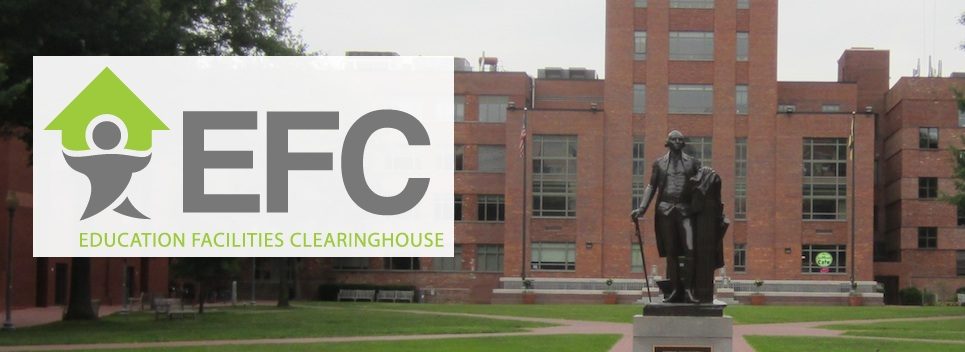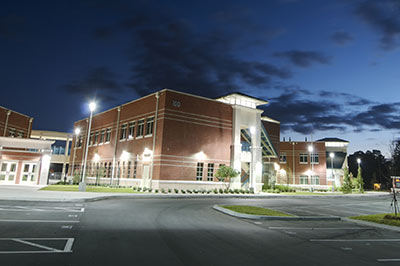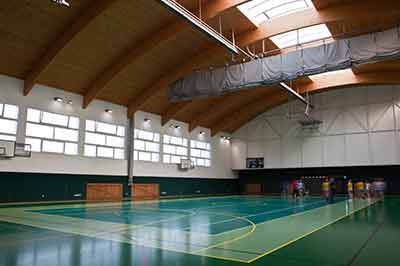Training is available in oil and gas, energy management, and risk management.
Category: Reports
Behavior-Based Energy Efficiency
See Action, State & Local Energy Efficiency Action Network
Historically, energy efficiency programs have relied on financial incentives to motivate people to purchase energy efficient products. Behavior‐based energy efficiency strategies rely on other motivations that influence people’s energy consumption. These non-financial influences can be powerful motivators that encourage people to reduce their energy consumption. For example, some utilities send their customers home energy reports, which present that customer’s energy use relative to similar home.
Powering Down
The Center for Green Schools, 2013.
A toolkit for Behavior-based energy conservation in k-12 schools.
This report examines five public schools that have reduced their electricity use by an astonishing 20 to 37 percent through successful behavior-based strategies. These exemplar schools vary in their attributes and are spread across the United States, but their programs are linked and defined by shared elements and strategies.
Architecture for Achievement: Our Kids Deserve Better
Architects of Achievement. Thoughtfully-designed school buildings—capable of supporting personalized, learning-focused, collaborative, and community-connected teaching and learning—have the power to transform individuals, schools, and the greater community. Momentum for high school reform is building as policymakers, opinion leaders, educators, and the general public recognize what visionary school reformers have known for years: American high schools, designed for a manufacturing economy that no longer exists, are failing to prepare our youth for college, career, and citizenship. Across the nation, large comprehensive high schools are being replaced with smaller, more dynamic learning communities. Our nation’s students are changing. School systems, curriculum and instruction, and facilities must evolve together, to prepare these new learners to lead our nation, and world, into the future. With you, we are honored to be part of this work.
DOLLARS & SENSE II: Lessons from Good, Cost-Effective Small Schools
KnowledgeWorks Foundation, 2005. Good small schools create supportive communities where students succeed, and both students and teachers thrive. Years of research and experience – not to mention common sense – support this notion. Yet legislators and other decision-makers continue to close small schools and build large ones because they think large schools are more cost effective to build, maintain, and operate. The first report, Dollars & Sense: The Cost Effectiveness of Small Schools, outlines the economic and social arguments in support of smaller schools and demonstrates that the true costs of large schools are enormous and the benefits dubious (D&SI, pp. 8 - 19).1
Dollars & Sense II: Lessons from Good, Cost-Effective Small Schools strengthens the case for the cost effectiveness of small schools with new research and examples of what’s working at such schools across the nation. It answers the question – “Can small schools actually be built and run at a cost per pupil that is comparable to that of large schools?” – with a resounding “yes.”
Designing a Healthy School Environment in a Rural Setting: Case Study
VMDO Architects, 2013. The new carter G. woodson center education complex located in Buckingham county, in central, rural Virginia, has been designed and renovated as a modern learning campus for K–5 students with the intent to promote connectivity, creativity, physical activity, health and well-being for students and for the Buckingham county district community. The design for the school renovation was developed using novel theory-based guidelines created collaboratively by the design team and health research teams from the university of Nebraska and the university of Virginia. the project involved renovating two former schools built in 1954 and 1962, and connecting them through newly built structures to form one new school. the architectural firm VMDO oversaw and supported the designs for architecture, interior spaces, graphics and wayfinding, and landscaping.
Insights on Childhood Obesity and School Design
Terry Huang, Matthew Trowbridge, VMDO Architects
THE DINING COMMONS represents a new direction in design research; architects, public health researchers, educators, and VS come together to examine one of the most complex environmental health issues of our time: childhood obesity. This design-research partnership marks a powerful moment in the design of learning environments as experts from disparate yet interrelated disciplines engage with the problem of childhood obesity by seeking to understand the political, social, economic, ecological, and infrastructural agendas that make up the school food environment. The DINING COMMONS highlights design strategies implemented at the Carter G. Woodson Education Complex in Buckingham County, VA. This K-5 campus project was completed in Summer 2012 with the aim of promoting healthful eating and physical activity with a particular emphasis on the design of indoor and outdoor dining, teaching / activity spaces, and connectivity with the larger community. Follow-up studies will be conducted by academic institutions from across the country.
Healthy Eating Design Guidelines for School Architecture
University of Virginia, University of Nebraska Medical Center, VMDO Architects. Information provided in this link deal with concerns about providing a well designed space that promotes healthy eating for students.
Closing a School Building: A Systematic Approach
McMillin, E. (2010). According to an American Association of School Administrators survey, 6 percent of school districts closed or consolidated schools during the 2008-2009 school year, double the rate of the previous year. Another 11 percent were considering school closings or consolidations in 2010-2011.
Equal Access: Universal Design of Physical Spaces
University of Washington, 2012. As increasing numbers of people with disabilities pursue educational opportunities at all levels, the accessibility of campus facilities and physical spaces increases in importance. The goal is simply equal access; everyone who visits your campus should be able to do so comfortably and efficiently.











